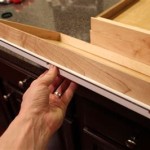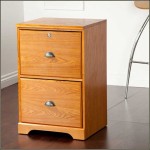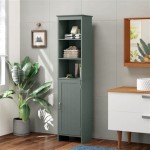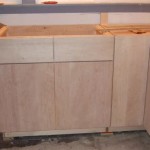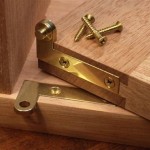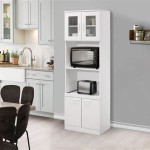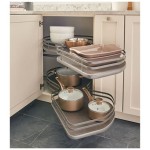How Do I Know What Cabinet Hinges I Need?
Selecting the correct cabinet hinges can be a surprisingly complex undertaking. Many different types, sizes, and functionalities cater to various cabinet styles and installation requirements. Making the wrong choice can lead to improperly functioning doors, aesthetic mismatches, and ultimately, the need for costly replacements and rework. Understanding the necessary factors for hinge selection ensures a successful installation and long-lasting cabinet performance. This article provides a comprehensive guide to identifying the appropriate cabinet hinges for specific needs.
Determining Overlay, Inset, or Full Inset
The first critical step is identifying the cabinet door's overlay style. This refers to how the door sits in relation to the cabinet frame or adjacent doors. There are three primary overlay styles: overlay, inset, and full inset. Understanding these distinctions is paramount for selecting compatible hinges.
Overlay doors cover a portion of the cabinet frame. The amount of overlay, typically measured in inches or millimeters, indicates how much the door overlaps the cabinet box. Common overlay measurements include 1/2 inch, 1 1/4 inch, and full overlay. To determine the overlay, measure the distance the door extends beyond the face frame on the hinge side. This measurement dictates the type of overlay hinge required.
For example, if a door extends 1/2 inch beyond the cabinet frame, a 1/2-inch overlay hinge is needed. Using an incorrect overlay measurement will result in the door either not closing properly (if the overlay is too small) or interfering with adjacent doors or frames (if the overlay is too large). Overlay hinges are frequently used in frameless (Euro-style) cabinets and face-frame cabinets.
Inset doors sit flush with the cabinet frame. The face of the door is perfectly aligned with the frame's outer edge. This creates a clean, streamlined appearance. Inset doors require specialized inset hinges that allow the door to swing open without binding against the frame.
Inset hinges are designed with a crank in the hinge arm, which pulls the door away from the frame during opening. These hinges are more complex than overlay hinges and require precise installation to ensure proper alignment and operation. Measuring for inset hinges involves determining the thickness of the door and the gap between the door and the frame. These measurements are used to select a hinge with the correct crank and cup depth.
Full Inset doors are similar to inset doors, sitting flush with the frame. However, there is no visible frame around the door. The entire cabinet box is concealed when the door is closed. Full inset hinges often combine the functionality of inset hinges with specific features for concealed mounting. These hinges are highly specialized and require careful attention to detail during installation.
Identifying the overlay style is the fundamental step in selecting the correct cabinet hinges. Misidentifying the overlay can lead to the purchase of incompatible hinges, resulting in installation difficulties and functional problems.
Assessing Cabinet Construction: Face-Frame vs. Frameless
The method of cabinet construction, specifically face-frame versus frameless (Euro-style), significantly influences the type of hinges needed. These two construction methods differ in how the cabinet box is assembled and how the doors are attached.
Face-Frame Cabinets feature a frame constructed of solid wood that is attached to the front of the cabinet box. This frame provides structural support and a surface for attaching the cabinet doors. Face-frame cabinets offer a more traditional aesthetic and allow for a wider range of hinge options due to the presence of the frame.
Hinges for face-frame cabinets can be mounted directly to the frame using screws. Common hinge types for face-frame cabinets include butt hinges, wrap-around hinges, and surface-mount hinges. These hinges are typically visible when the door is open, although concealed hinges designed for face-frame cabinets are also available.
When selecting hinges for face-frame cabinets, the thickness and width of the face frame must be considered. The hinge size and mounting hole locations should be compatible with the frame dimensions. Using screws that are too long can damage the frame, while screws that are too short may not provide sufficient holding power.
Frameless Cabinets, also known as Euro-style cabinets, lack a face frame. The cabinet doors are attached directly to the sides of the cabinet box. This construction method creates a sleek, modern appearance and maximizes interior storage space. Frameless cabinets typically use concealed hinges that are mounted inside the cabinet box and are not visible when the door is closed.
Concealed hinges for frameless cabinets are often referred to as European hinges. These hinges feature a cup that is recessed into the back of the cabinet door and an arm that attaches to the inside of the cabinet box. European hinges offer a wide range of adjustability, allowing for precise alignment of the doors.
The thickness of the cabinet side panels is a crucial factor when selecting European hinges. The hinge cup diameter and mounting hole locations must be compatible with the panel thickness. Using the wrong size hinge can compromise the structural integrity of the cabinet box.
Determining whether the cabinets are face-frame or frameless is essential for selecting the appropriate hinge type and ensuring a secure, functional installation. Failing to consider the cabinet construction can result in the selection of incompatible hinges and installation difficulties.
Considering Hinge Features and Functionality
Beyond overlay style and cabinet construction, various hinge features and functionalities cater to specific needs and preferences. These features can enhance the user experience, improve cabinet performance, and extend the lifespan of the hinges.
Soft-Close Hinges are designed to prevent cabinet doors from slamming shut. These hinges incorporate a hydraulic mechanism that gradually slows the door's closing speed, resulting in a gentle, quiet closure. Soft-close hinges are particularly beneficial in kitchens and bathrooms where minimizing noise and preventing damage to the cabinet are important considerations.
Soft-close hinges are available in both overlay and inset styles and can be used with both face-frame and frameless cabinets. The soft-close mechanism adds a small amount to the hinge's overall size and cost but offers significant benefits in terms of noise reduction and cabinet protection.
Self-Closing Hinges automatically pull the cabinet door closed when it is within a few inches of the closed position. These hinges use a spring mechanism to provide the closing force. Self-closing hinges are useful for ensuring that cabinet doors are always fully closed, preventing drafts and maintaining a tidy appearance.
Self-closing hinges are commonly used in kitchens, bathrooms, and laundry rooms. They are available in a variety of styles and finishes to match different cabinet designs. The closing force of self-closing hinges can be adjusted to suit the weight and size of the cabinet door.
Adjustable Hinges allow for fine-tuning the alignment of the cabinet door after installation. These hinges feature screws that can be used to adjust the door's position vertically, horizontally, and in depth. Adjustable hinges are particularly useful for ensuring that doors are perfectly aligned and that gaps between doors are consistent.
Adjustable hinges are commonly used in frameless cabinets where precise alignment is essential. They are available in both overlay and inset styles. The range of adjustability varies depending on the hinge model, but typically allows for adjustments of a few millimeters in each direction.
Concealed Hinges are hidden from view when the cabinet door is closed, creating a clean, seamless appearance. These hinges are typically used in frameless cabinets but are also available for face-frame cabinets. Concealed hinges offer a modern aesthetic and prevent the hinges from detracting from the overall design of the cabinet.
Concealed hinges are available in a wide range of styles and finishes. They are typically more expensive than visible hinges but offer a significant aesthetic benefit. Installation of concealed hinges requires precise measurements and careful attention to detail.
Selecting the appropriate hinge features and functionalities depends on the specific needs and preferences of the user. Considering factors such as noise reduction, ease of use, and aesthetic appeal ensures that the chosen hinges provide optimal performance and satisfaction.

Understanding Full Overlay Vs Half Insert Cabinet Hinges Furniture Hardware

Choosing The Right Cabinet Hinges For Your Project

3 Simple Ways To Measure Cabinet Hinges Wikihow

Types Of Cabinet Hinges The Home Depot

Here S How Select The Proper Type Of Hinges

How To Install Concealed Hinges Painting By The Penny

How To Choose The Right Kitchen Cabinets Hinges

Door And Cabinet Hinge Sizes The Kitchen Company

Types Of Cabinet Hinges The Home Depot

Cabinet Hinge Types Choosing The Right Hardware
Related Posts

